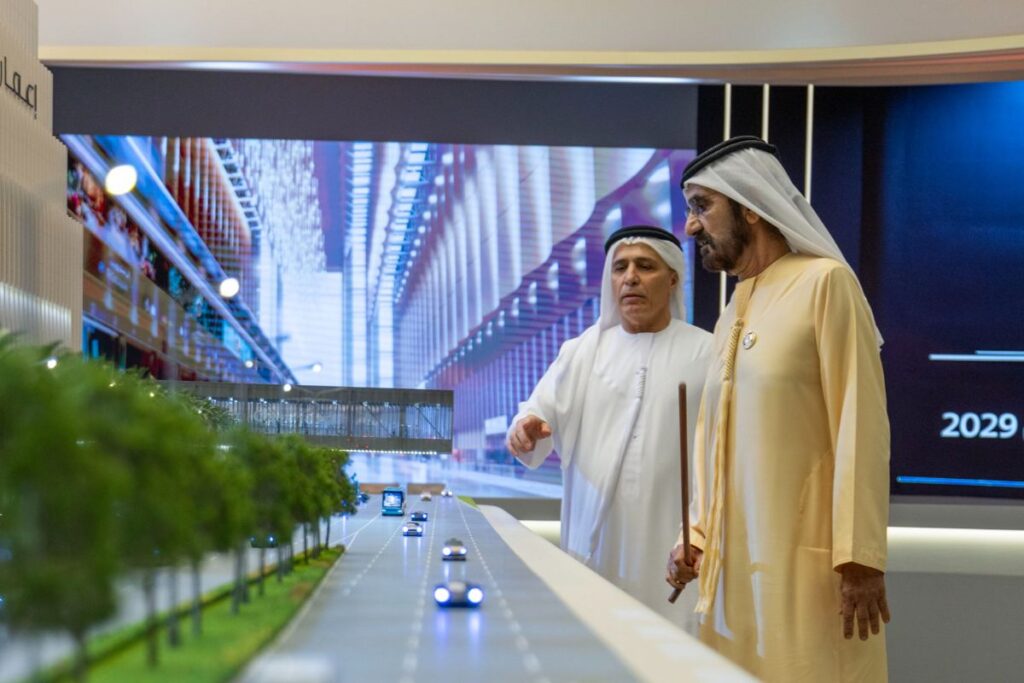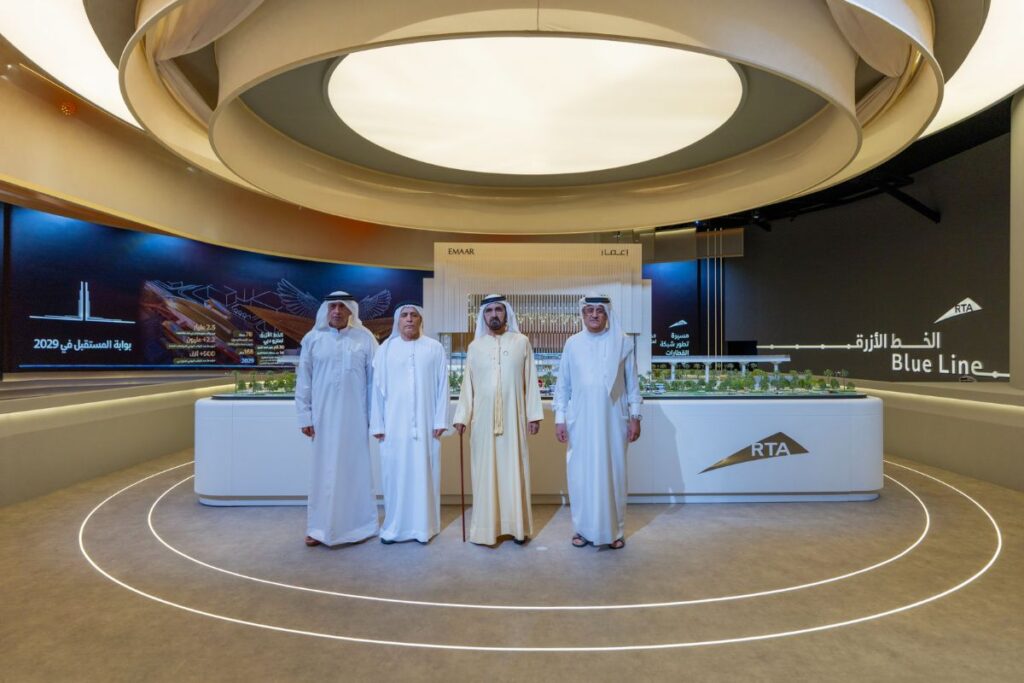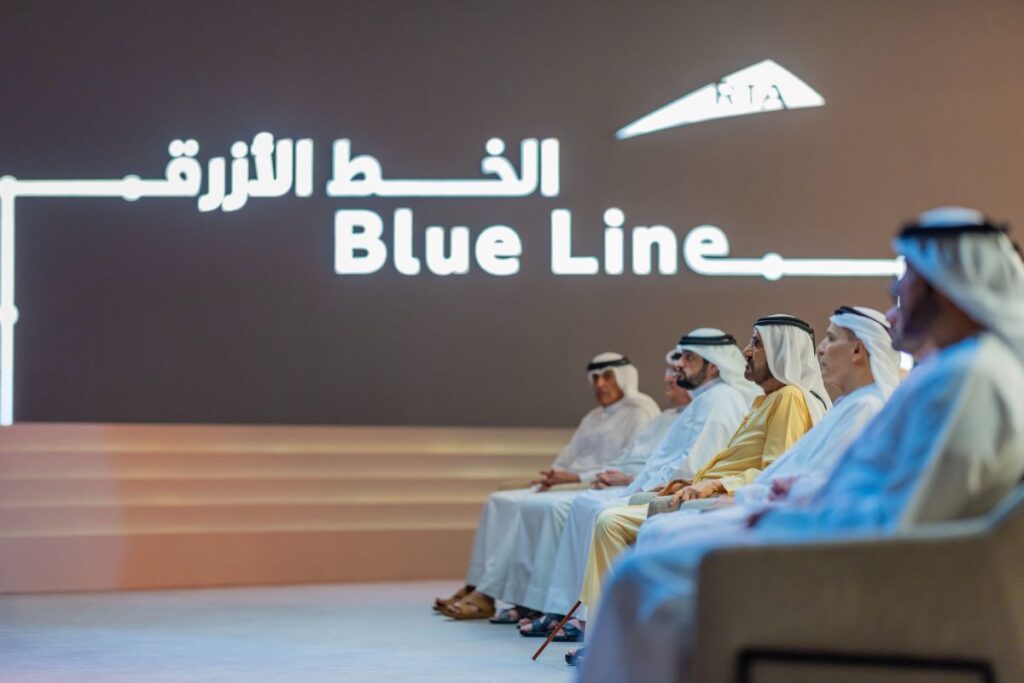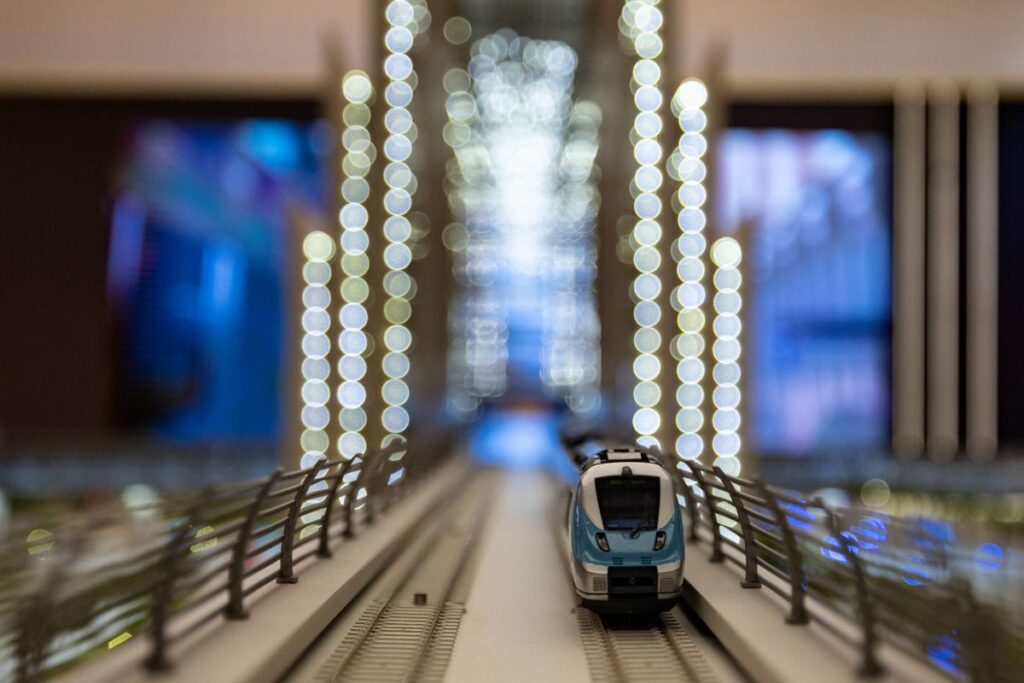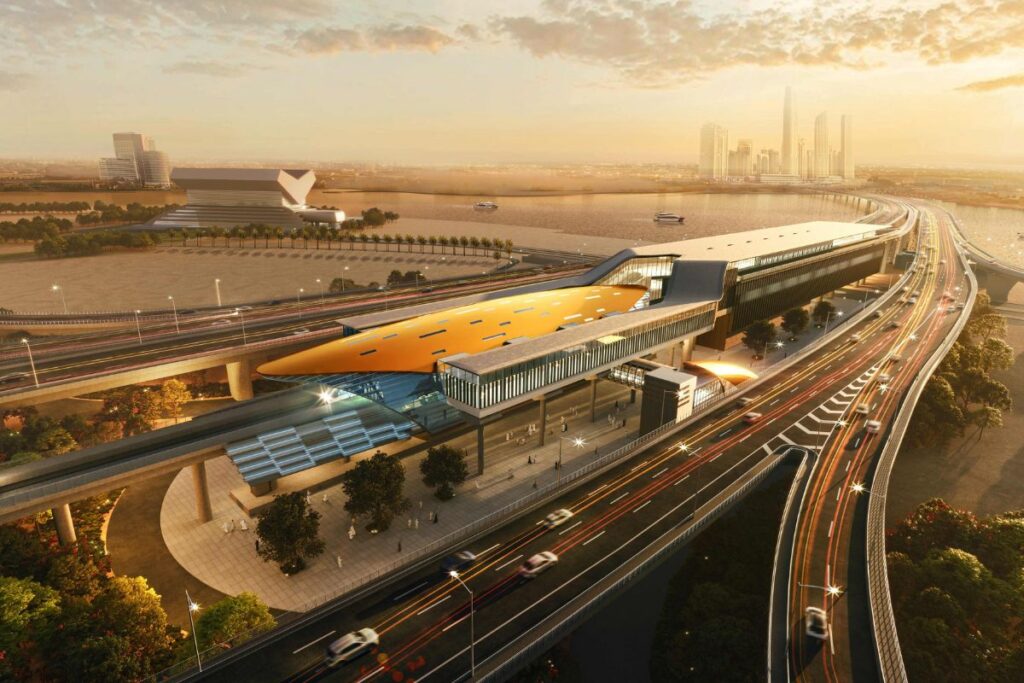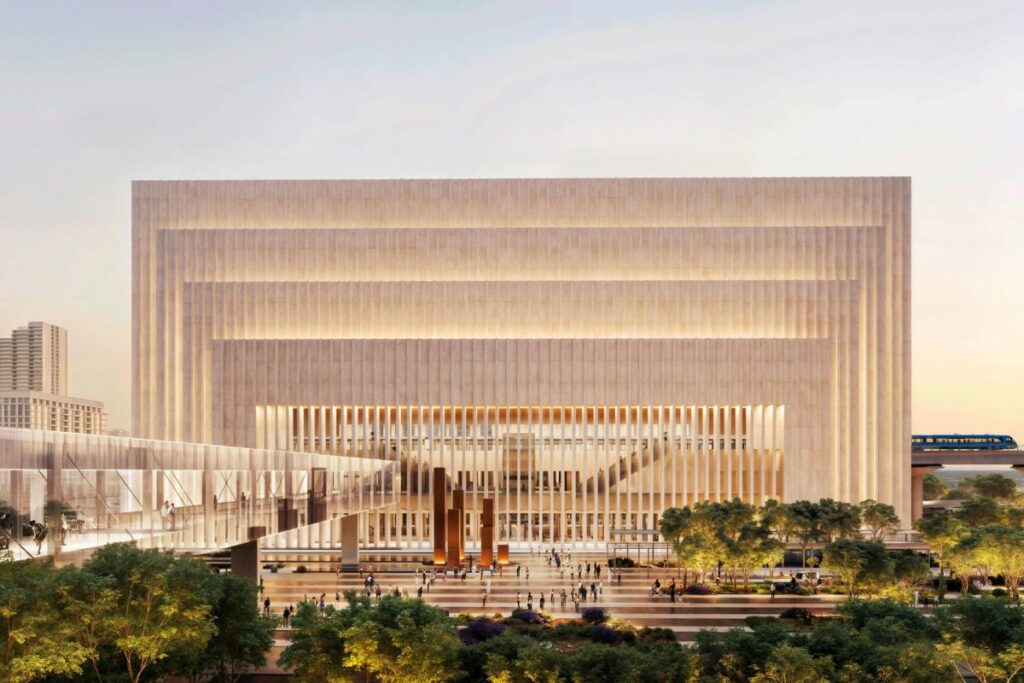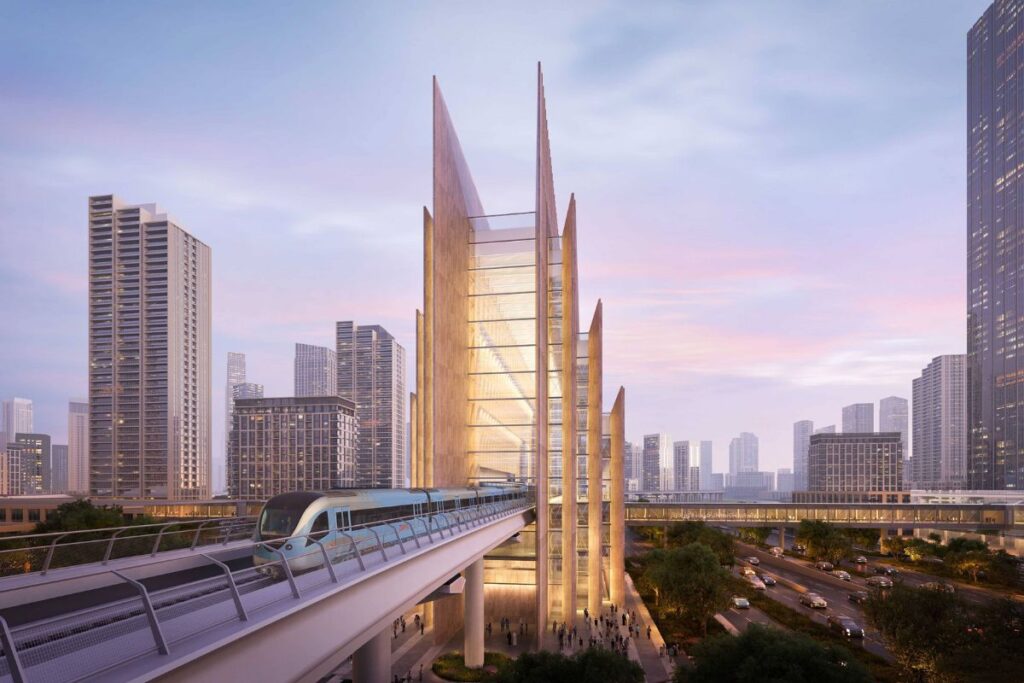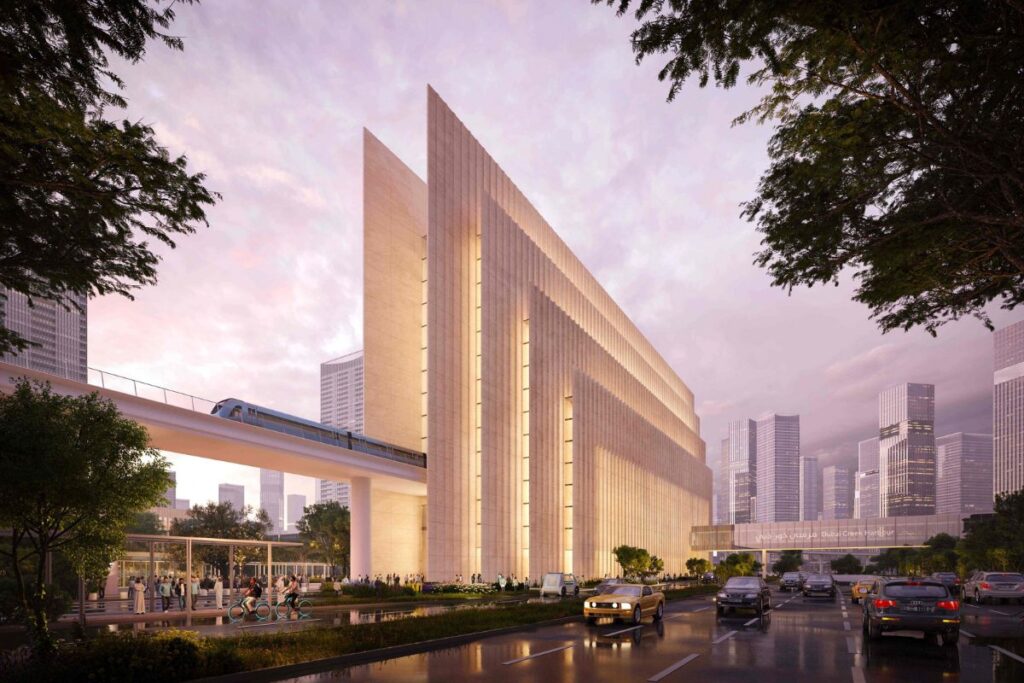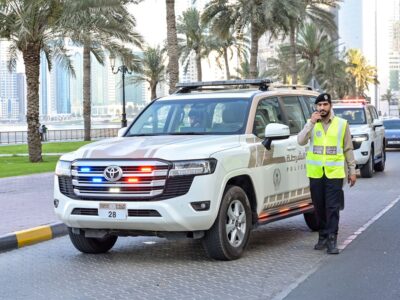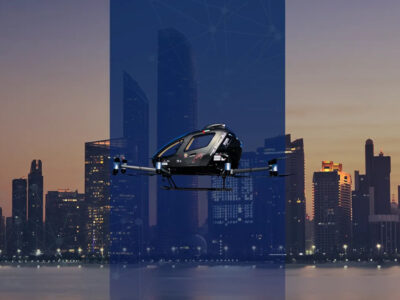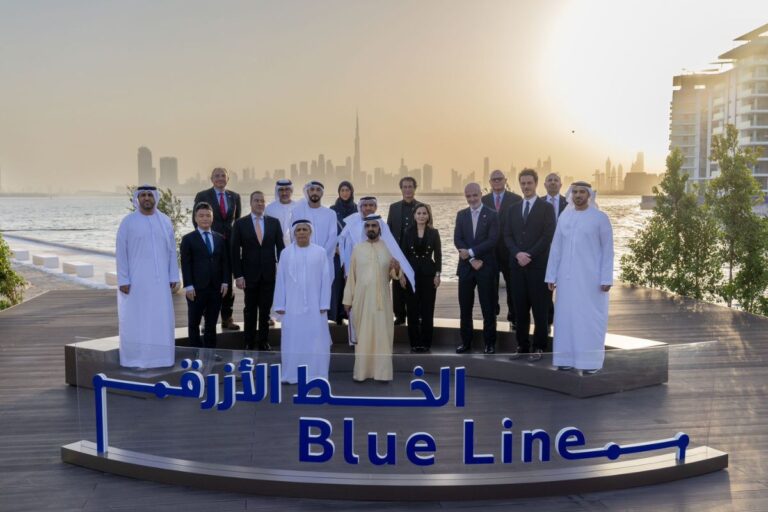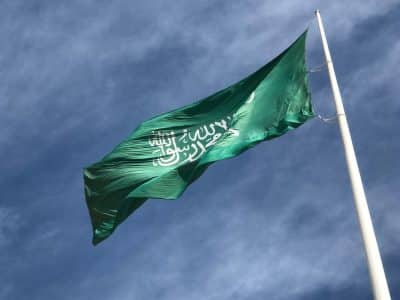Sheikh Mohammed bin Rashid Al Maktoum, Vice President and Prime Minister of the UAE, and Ruler of Dubai, attended the foundation stone laying ceremony of the Dubai Metro Blue Line, marking a milestone in the expansion of the city’s public transportation network.
The new line will span 30 kilometres and comprise 14 stations, transforming mobility across nine districts projected to house over one million residents according to the Dubai 2040 Urban Master Plan, the Dubai Media Office said in a statement.
“During the laying of the foundation stone for the first station on the Dubai Metro’s Blue Line, which has a total benefit valued at AED 56 billion, the station represents an architectural icon that will be added to Dubai’s cultural icons. It will be the first station on the Blue Line, which will extend 30 kilometers, bringing the total length of Dubai’s railways to 131 kilometers and 78 stations. Since its launch until the end of last year, the Dubai Metro has transported more than 2.5 billion people, an average of 900,000 passengers per day. The new route will be a major addition to the emirate’s transport infrastructure. We continue to develop the city… we continue to build the best city to live in the world,” Sheikh Mohammed said in an X post.
Dubai Metro Blue Line to feature world’s tallest metro station at 74 metres
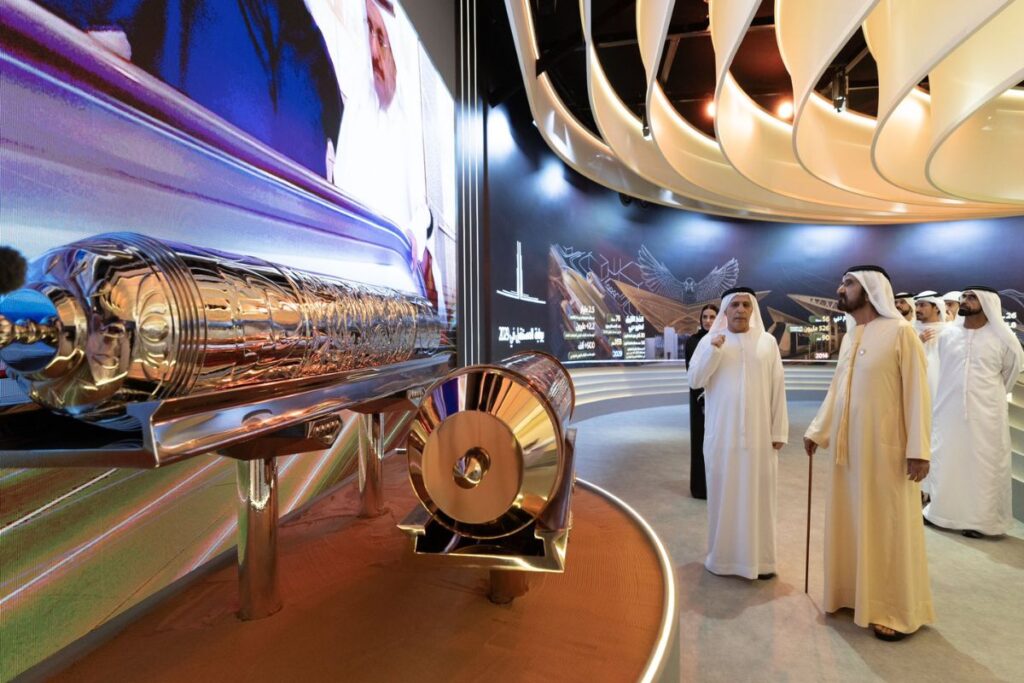
The Dubai Ruler approved the design of the Emaar Properties Station, which will become the world’s tallest metro station at 74 metres.
The American architectural firm Skidmore, Owings & Merrill (SOM) designed the station, taking inspiration from the concept of a crossing gateway.
SOM’s portfolio includes landmarks such as the Burj Khalifa, the Olympic Tower in New York, and the Sears Tower in Chicago.
The station will cover approximately 11,000 square metres and accommodate up to 160,000 passengers per day, with daily users expected to exceed 70,000 by 2040.
Upon completion of the Blue Line project, Dubai’s rail network will expand to 131 kilometres total, comprising 78 stations and 168 trains.
Mattar Al Tayer, Director General, Chairman of the Board of Executive Directors of the Roads and Transport Authority (RTA), briefed Sheikh Mohammed on the Metro’s expansion.
Dubai Metro ridership grows to 275.4 million passengers in 2024
Al Tayer stated that the Dubai Metro has transported over 2.527 billion passengers from its launch on 9 September 2009 through the end of 2024, recording a daily average of 900,000 passengers in 2024.
Ridership has grown from 38.887 million in 2010 to 69 million in 2011, reflecting a growth rate of 77 per cent.
The figure continued rising to over 109 million passengers in 2012, before surpassing 200 million in 2017, jumping to 260 million in 2023 and hitting 275.4 million in 2024.
Studies indicate the number of Dubai Metro passengers is expected to exceed 300 million in 2026 and reach 320 million by 2031.
The service began in 2009 with 10 stations, reaching 26 stations in 2010 and growing to 46 stations in 2011.
The Dubai Tram started operations in 2014, and the number of metro and tram stations rose to 56.
In 2021, the launch of Route 2020 added seven more stations, raising the total to 64. The Blue Line will add 14 new stations, bringing the total to 78.
The number of trains rose from 16 at the Metro’s launch in 2009 to 44 in 2010, reaching 79 trains by 2011 and increasing to 90 with the Dubai Tram inauguration in 2014, further expanding to 140 by 2021.
Blue Line capacity to exceed 850,000 daily passengers
With the Blue Line coming into operation, the total number of trains will increase to 168, comprising 157 Metro trains and 11 Tram trains.
“The Blue Line comprises two main routes. The first runs from Creek Interchange Station on the Green Line, located in Al Jaddaf, passing through Dubai Festival City, Dubai Creek Harbour, and Ras Al Khor, before reaching International City 1, which includes an underground interchange station. The route continues towards International City 2 and 3, extending to Dubai Silicon Oasis and up to Academic City. This section spans 21 km and connects 10 stations,” Al Tayer said.
“The second route of the Blue Line starts from Centrepoint Interchange Station on the Red Line in Al Rashidiya. It passes through Mirdif and Al Warqa, concluding at International City 1 Interchange Station. This route measures 9 km in length and links four stations. The project also includes the construction of a metro depot at Al Ruwayah 3,” he added.
The Emaar Properties Station will stand 74 metres tall and 38 metres wide, offering passengers an immersive spatial experience.
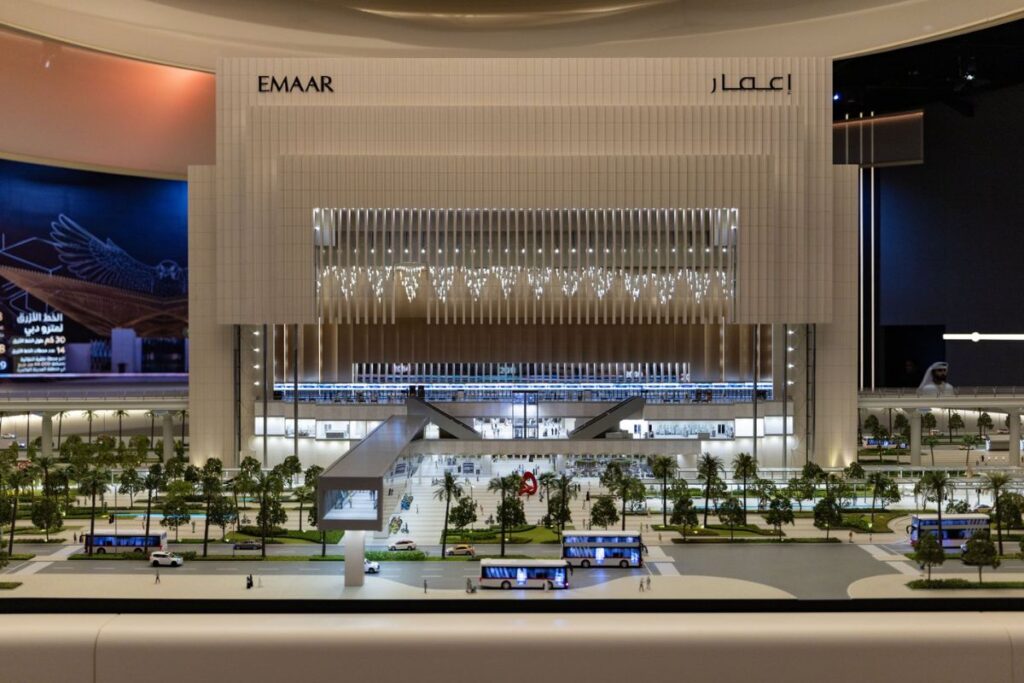
The exterior features a towering facade that harmonises with the area’s architectural identity, with a central gateway allowing natural light to flood down to the platform level.
The interior design features towering walls finished in natural textures and warm, earthy tones.
The material palette includes Jura limestone and bronze metal wall panels at the platform level, complemented by granite flooring.
Glass ceiling panels at both lobby and platform levels allow natural light to permeate the space.
The station will serve the estimated 40,000 residents of Dubai Creek Harbour, in addition to visitors. Emaar has secured naming rights for the station for ten years, starting from its inauguration in 2029.
The Blue Line consists of 14 stations, including three interchange stations at Al Jaddaf, Al Rashidiya and International City 1, plus the Emaar Properties Station in Dubai Creek Harbour. Daily ridership on the Blue Line is projected to reach 320,000 passengers by 2040.
The line will be the first Dubai Metro line to cross Dubai Creek on a 1,300-metre-long viaduct. It includes nine elevated stations and five underground stations, with features including public bus bays, taxi stands, dedicated areas for bike and electric scooter racks, and parking spaces for People of Determination.
The maximum capacity of the Dubai Metro Blue Line exceeds 850,000 passengers per day. Passenger numbers are expected to reach 200,000 per day by 2030, rising to 320,000 per day by 2040.
The Blue Line connects existing and future high population density areas, estimated to reach around one million residents by 2040.
Key areas served include Dubai Creek Harbour, Dubai Festival City, International City (home to Dragon Mart and large residential complexes visited by over 200,000 residents and visitors), and residential neighbourhoods like Al Rashidiya, Al Warqaa, and Mirdif.
The line extends to Dubai Silicon Oasis, recognised as one of the Dubai 2040 Urban Master Plan’s Urban Centres, and Academic City, projected to accommodate over 50,000 university students by 2029.
Dubai Metro Blue Line achieves first platinum green building certification

Initial studies by RTA indicate that by 2040, the project is projected to yield a benefit-cost ratio of 2.60 (AED2.60 in benefits for every AED1 spent).
The total anticipated benefits will exceed AED56.5 billion by 2040, including substantial savings in time and fuel, reduced accident-related fatalities, and lower carbon emissions.
The Blue Line is expected to decrease traffic congestion on its served routes by 20 per cent and appreciate the value of land and properties near stations by up to 25 per cent.
The Blue Line represents the first transport project in Dubai to fully comply with green building standards, achieving Platinum Category certification.
Station designs have been planned to maximise space efficiency, reducing construction, operation and maintenance costs whilst ensuring seamless integration with various transportation modes.
Dubai Metro maintains its position globally with a current total length of 90 kilometres. This network includes around 52 kilometres for the Red Line, 23 kilometres for the Green Line, and 15 kilometres for Route 2020. The network comprises 53 stations and 129 trains.
The Dubai Metro has achieved a 99.7 per cent punctuality rate and represents nearly 60 per cent of total usage across all public transportation modes in Dubai.
The system played a role in boosting Dubai’s competitiveness for hosting international events, including Expo 2020 Dubai, which coincided with the launch of Dubai Metro Route 2020.
The Blue Line represents the fifth strategic public transport project, joining the existing red and green lines of the Dubai Metro, Dubai Tram and Dubai Metro Route 2020.

